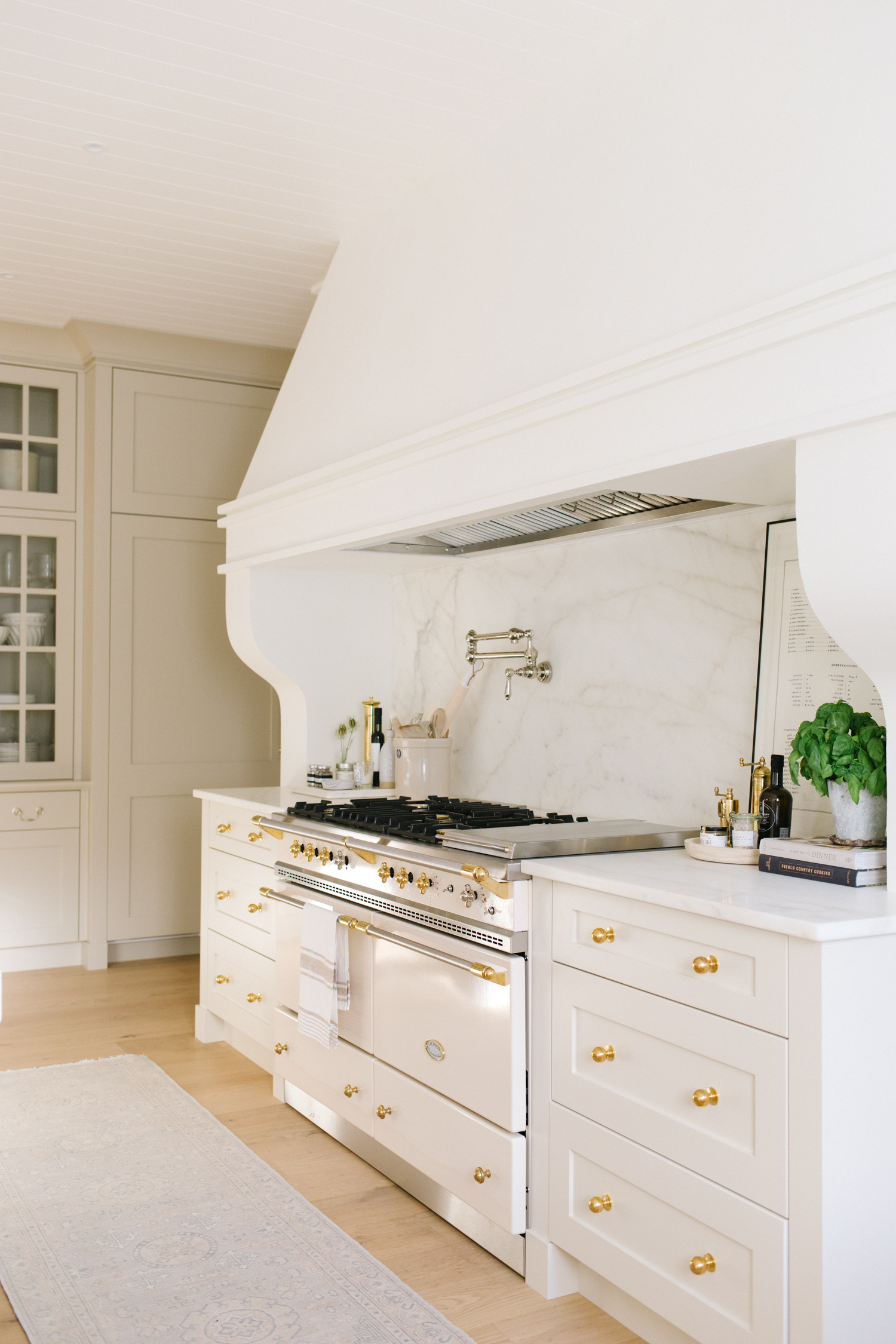When designing your kitchen, it’s crucial to seek inspiration and identify the styles that truly resonate with you and your lifestyle. If you lean towards an all-white kitchen with subtle pops of contrast, then that’s the look you should go for. If colourful cabinets are your preference, consider incorporating colour on your island, base cabinets, or even on the countertops.
When selecting colours, be sure to choose a shade that will stand the test of time and won’t become tiresome in five years. For instance, if you’re drawn to green cabinets but have doubts about the longevity, consider accessorizing with green instead. It’s a cost-effective and easily changeable option.
When starting the design phase your kitchen designer will inquire about your preference toward traditional, transitional, or modern styles. These are the three primary styles to consider when designing your kitchen.

Traditional – The traditional style pays attention to the intricate details and unique characteristics, often incorporating neutral colour schemes creating a cozy and inviting atmosphere in the home. This timeless style has been prevalent for many years and draws inspiration from various influences and historical periods, making it a versatile and enduring choice for kitchen design.

Photo credit : Monika Hibbs
Transitional – The transitional style seamlessly blends the sleek, clean lines of contemporary design with the warmth and elegance of traditional styles. This fusion creates a timeless charm, making it a versatile choice that pairs beautifully with neutral colour palettes. The modern elements, such as minimalist hardware and geometric shapes, are softened by traditional details, such as ornate mouldings or natural wood finishes. This combination results in a kitchen space that feels both sophisticated and inviting, striking the perfect balance between modern and traditional aesthetics.

Photo credit : campbellcabinetrydesigns
Contemporary – The modern kitchen is designed with minimalism and simplicity. It’s sleek and simple. The attention to detail is evident, which is subtle and integrated. The kitchen’s clean lines, smooth surfaces, and precise cuts give the room character, order and beauty which are equally important in this space.

Photo credit : three birds renovation
It is essential to understand the difference between traditional, transitional, and contemporary styles to make an informed decision when designing a kitchen. Each style offers unique elements and aesthetics, catering to different preferences and needs. Whether one prefers the intricate details of traditional design, the timeless charm of transitional style, or the modern simplicity of contemporary design, there are versatile options available for creating a kitchen space that suits individual tastes and complements the home.